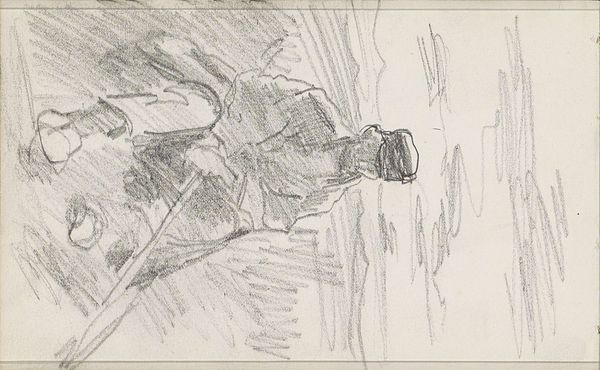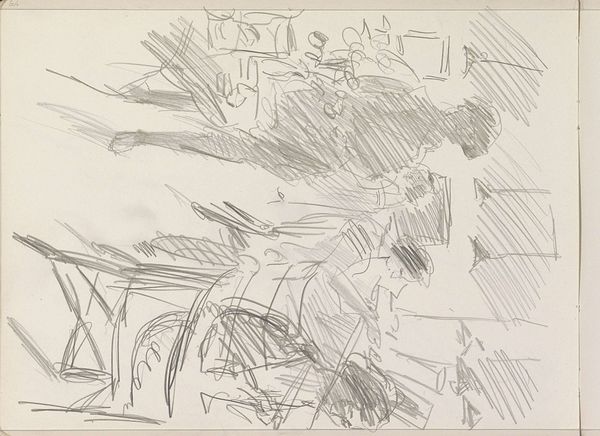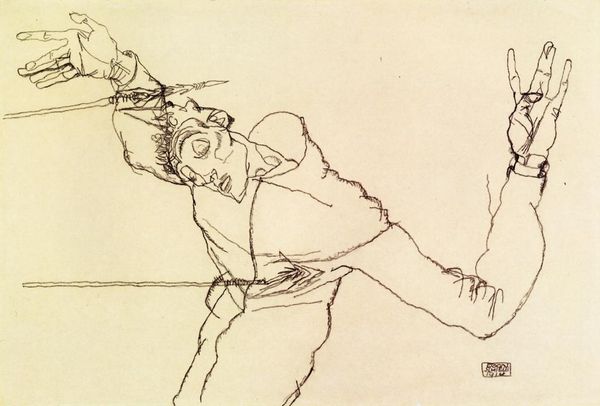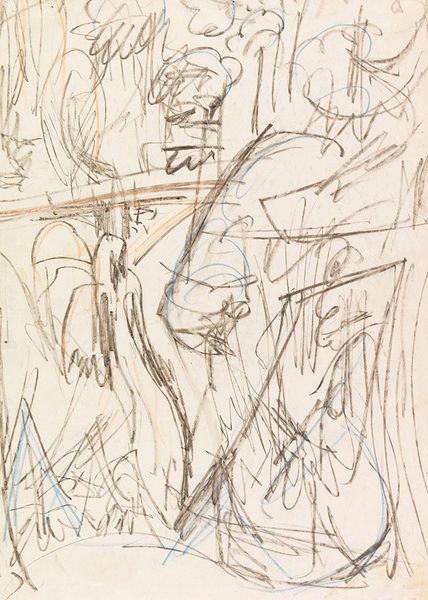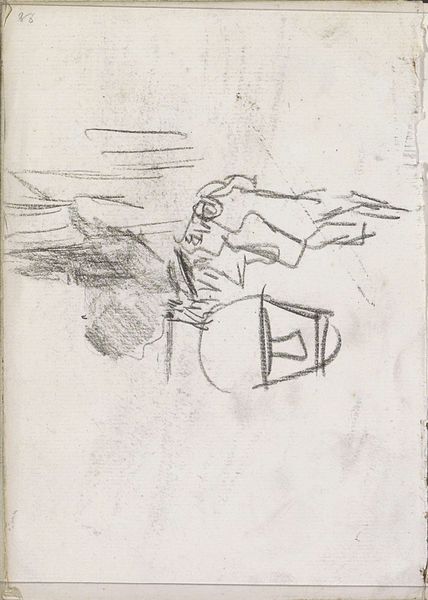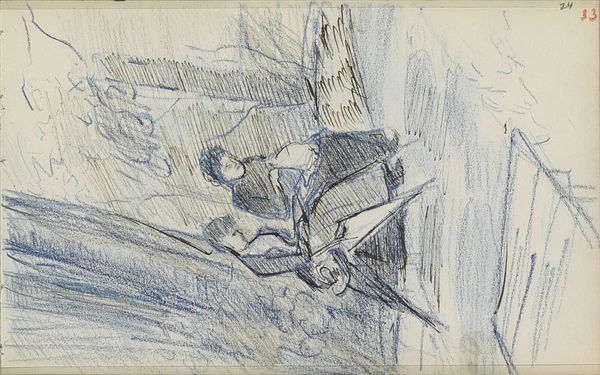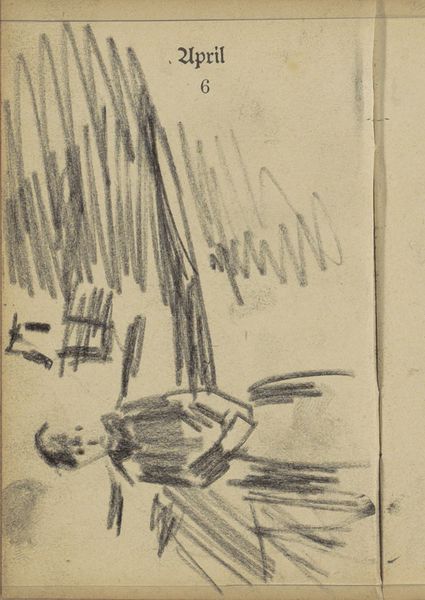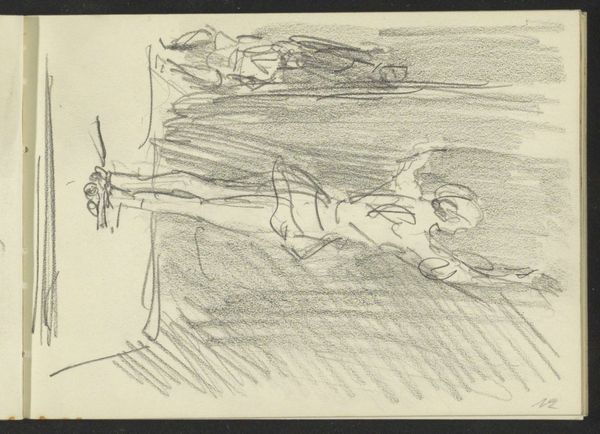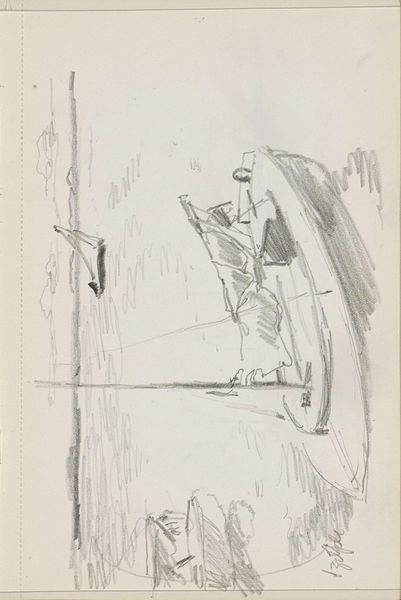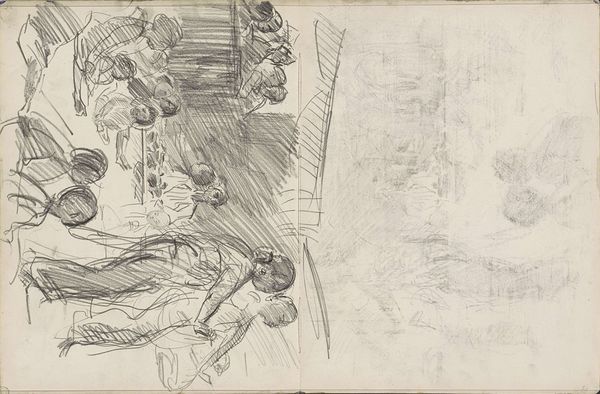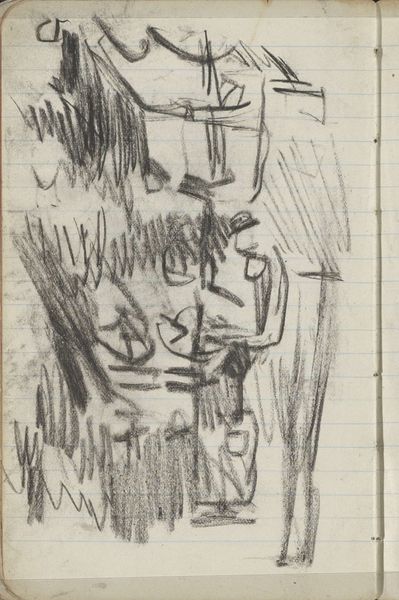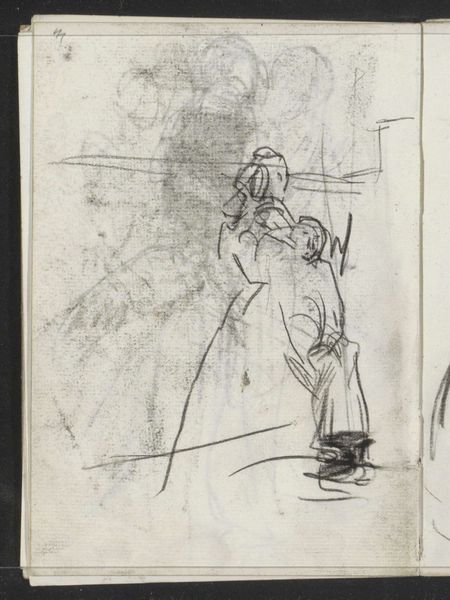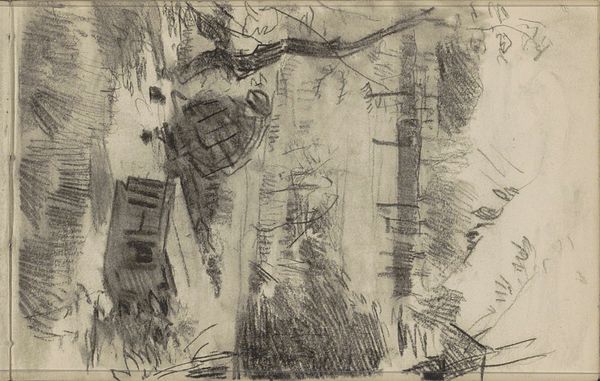
drawing, pencil, pastel
#
portrait
#
drawing
#
figuration
#
pencil
#
expressionism
#
pastel
Copyright: Public Domain: Artvee
Curator: Here we have "Štúdia lovca", or "Hunter's Study," rendered in 1930 using pencil and pastel by Arnold Peter Weisz-Kubínčan. Editor: Ooh, there’s a sort of frantic energy in this one. It feels like peeking into a really intense dream sequence, all jagged lines and unstable colours. Curator: Indeed. Note the deliberate use of line to create spatial tension, forcing the eye to consider foreground, middle ground, and the suggestion of a background that feels more like a cage than an open landscape. Editor: Right, like the hunter is both stalking and trapped simultaneously. It's such a raw style, you can practically feel the artist's hand moving across the paper, trying to wrestle this image into existence. Are those supposed to be like animal markings behind him, sort of faded? Curator: Possibly, or perhaps the stylized flourishes serve more as a visual metaphor—a symbolic rendering of the hunt rather than a literal depiction of a scene. This aligns well with Expressionist principles, moving away from representation and more toward emotional evocation. Editor: Totally. The color choices contribute so much too – the pallid skin tones and that splotch of intense red, like a fresh wound or a burst of adrenaline, just intensify the overall unsettling vibe. I mean it looks like a child colored it, yet the content screams adult nightmare. Curator: And while on first glance it does look unskilled, Weisz-Kubínčan carefully exploits the texture and opacity of pencil and pastel, pushing at their material limits to build tension and create atmosphere. Observe the hatch marks, strategically layered and subtly modulated to create an unsettling affect. Editor: This guy's obviously going through it. This artwork feels vulnerable in its chaos. Like looking into somebody's open diary. It's both revealing and jarring at the same time. Curator: It’s true, it's certainly not an easy composition. However, after examining it for some time now, I feel Weisz-Kubínčan encourages us to delve deeper into the psychology of man, using symbolism and expressionist methods that are complex and worth considering for a longer period. Editor: Well said! For me, this work is about the human psyche, messy and flawed.
Comments
No comments
Be the first to comment and join the conversation on the ultimate creative platform.
